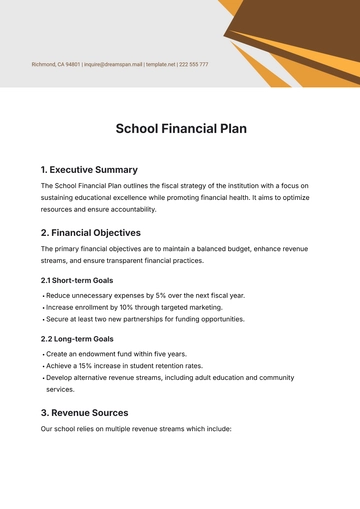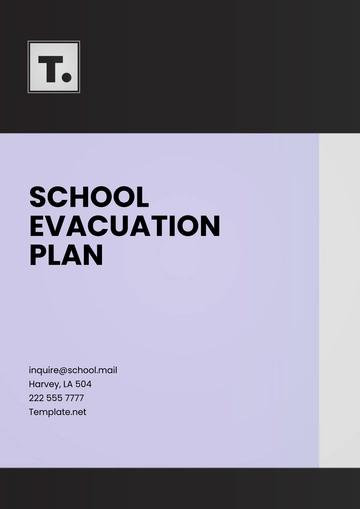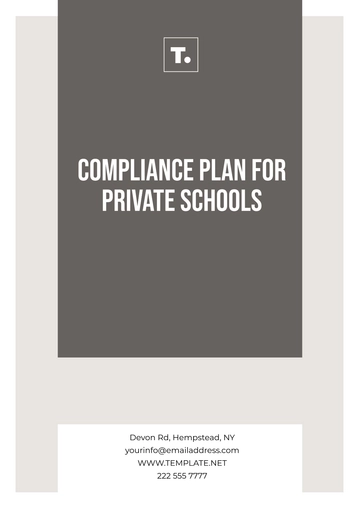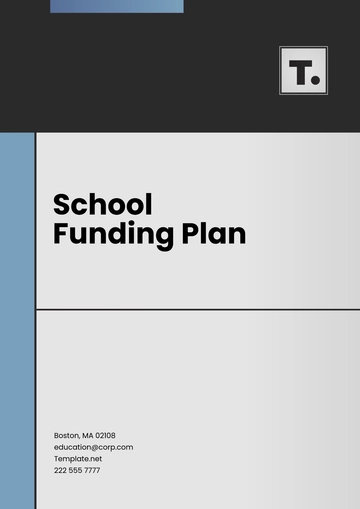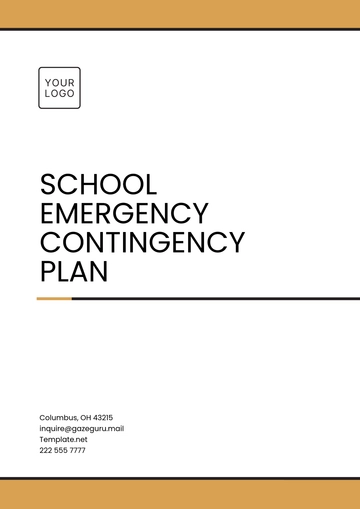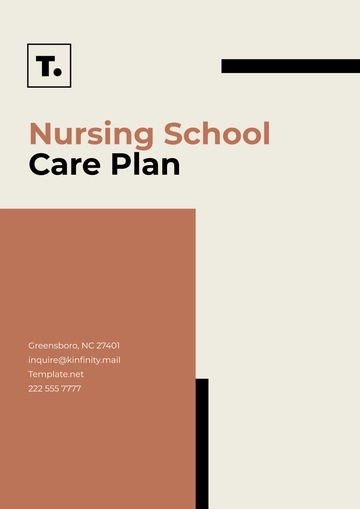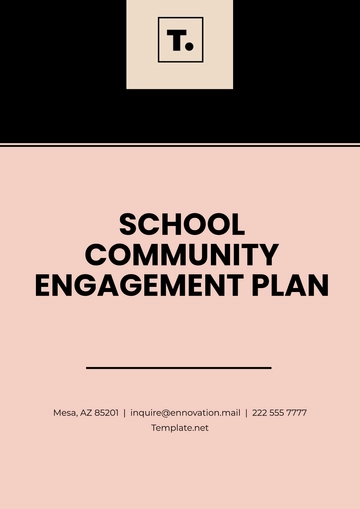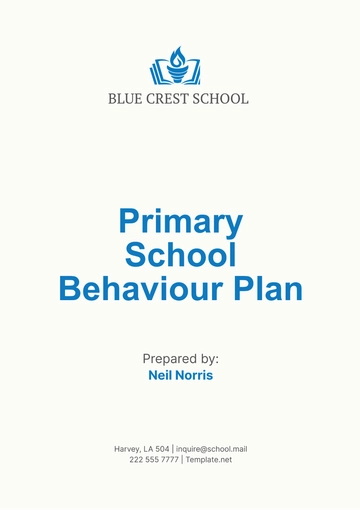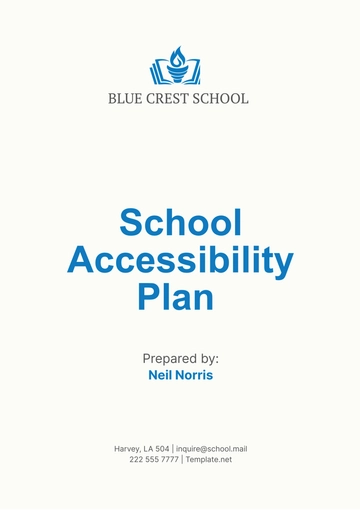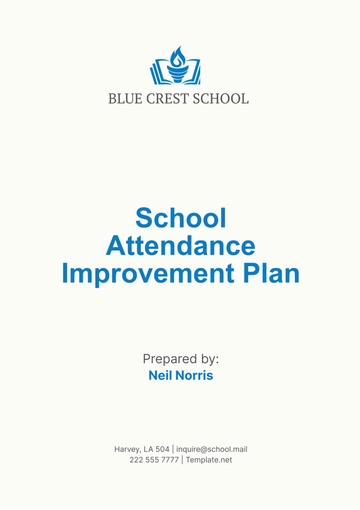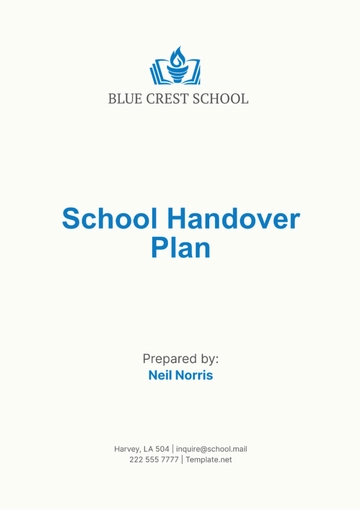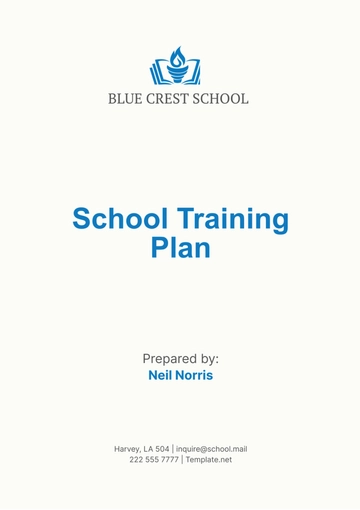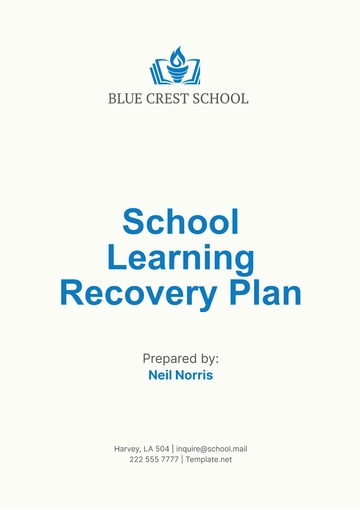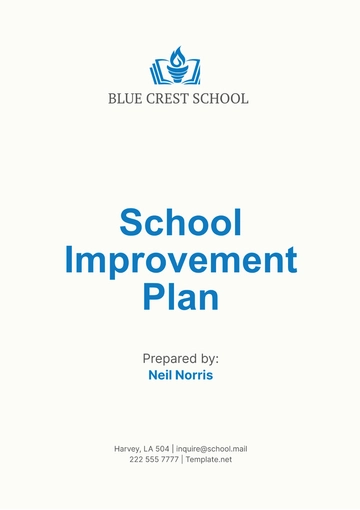Free School Employee Plan
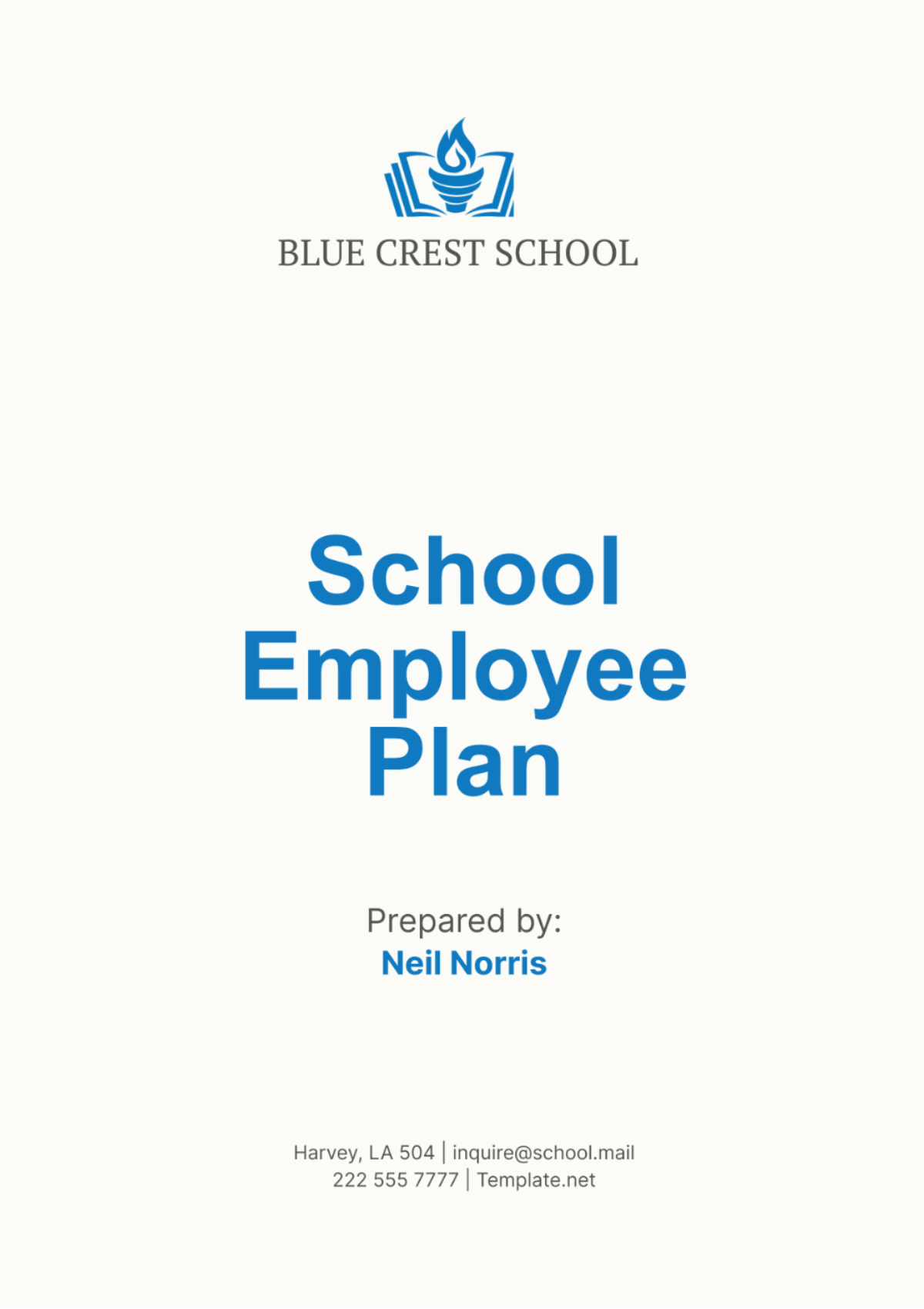
I. Introduction
A. Purpose of the Employee Plan
The School Employee Plan aims to provide robust benefits that support the physical, financial, and professional well-being of our esteemed educators and staff members. By offering comprehensive health coverage, generous retirement options, and various wellness programs, we strive to attract and retain top talent while fostering a positive work environment conducive to academic excellence.
B. Overview of the Educational Institution
[Your Company Name] is a distinguished educational institution dedicated to delivering exceptional learning experiences and nurturing the growth of our students. Located in [State], our school district serves a diverse community and employs over [000] dedicated professionals committed to the educational success of every student.
II. Administration and Governance
A. Responsibilities of HR Department
The Human Resources Department oversees the day-to-day administration of the Employee Plan, including enrollment processing, benefit inquiries, and coordination with external benefit providers. HR ensures that all benefit programs comply with regulatory requirements and are communicated effectively to employees through various channels.
B. Roles of School Administrators and Board Members
School administrators and board members provide strategic oversight and governance of the Employee Plan. They review and approve benefit policies, allocate budget resources, and ensure alignment with the educational goals and fiscal responsibilities of [Your Company Name].
C. Legal Compliance and Oversight
Our Employee Plan adheres to federal, state, and local regulations governing employee benefits, including but not limited to ERISA, ACA, and HIPAA. Legal counsel collaborates with HR to draft and review plan documents, contracts with benefit providers, and policies to protect the rights and interests of both the school district and its employees.
III. Employee Benefits
A. Health Insurance
Medical Coverage
Employees have the opportunity to select from a variety of medical plans that are offered by well-known and reliable insurance providers. These medical plans include a range of options to suit different healthcare needs and preferences. Among the available choices are Preferred Provider Organization (PPO) plans, Health Maintenance Organization (HMO) plans, and High-Deductible Health Plans (HDHP). For your convenience, a detailed summary of the available coverage options is provided below:
Plan Type | Coverage Details |
|---|---|
PPO | Low deductibles, broad network of providers |
HMO | Lower premiums, primary care physician coordination |
HDHP | High deductibles paired with tax-advantaged HSA |
Dental and Vision Plans
There is an option to include dental and vision coverage, which comes with competitive premium rates and offers a comprehensive array of benefits. These benefits encompass routine examinations, orthodontic treatments, and vision correction services, ensuring a thorough and well-rounded approach to your dental and vision health needs.
Prescription Drug Coverage
All medical insurance plans encompass prescription drug benefits, ensuring that individuals have the opportunity to obtain a diverse array of medications at affordable prices. This is facilitated through the utilization of network pharmacies, which are partner establishments that collaborate with the insurance providers to make prescription drugs more accessible and cost-effective for policyholders.
B. Retirement Benefits
Pension Plans
Employees who meet the eligibility requirements are enrolled in a defined benefit pension plan. This plan calculates the retirement benefits that each employee will receive by taking into account two key factors: the number of years the employee has worked for the organization and the average salary that the employee has earned over a specific period of time. The following table provides a detailed illustration of the typical pension benefits that employees might expect to receive under this plan:
Years of Service | Pension Benefit (Percentage of Salary) |
|---|---|
10 | [00]% |
20 | [00]% |
30 | [00]% |
403(b) Retirement Savings Plans
Employees have the opportunity to allocate a portion of their earnings into 403(b) accounts before taxes are deducted. Additionally, the employer contributes to these accounts by matching the employee’s contributions up to a certain specified percentage. This structure of the retirement savings plan is designed to enable the funds invested to grow over time. The growth of these investments can then be used to supplement the employees' pension benefits upon retirement.
Contribution Matching Programs
[Your Company Name] provides a matching program for employee contributions to 403(b) retirement plans. Under this program, the company matches contributions made by employees to these plans up to a maximum of [0]% of their annual salary. This initiative is designed to encourage employees to save for the long term, thereby enhancing their financial security and ensuring they are better prepared for retirement.
C. Life and Disability Insurance
Life Insurance Coverage
Employees are furnished with basic life insurance coverage at no expense to themselves. They also have the option to acquire additional life insurance coverage for both themselves and their eligible dependents, should they choose to do so. The total amounts of coverage that employees can obtain are calculated based on two primary factors: the employee's salary and their employment status within the organization.
Short-term and Long-term Disability Coverage
Disability insurance benefits function as a financial safety net for employees who unfortunately find themselves temporarily or permanently disabled and, as a result, unable to continue working. These benefits aim to replace a specific percentage of the income that the employee would have earned had they not been incapacitated. The principal objective of these benefits is to help sustain the financial stability of the affected individual and their family throughout the period of recovery or rehabilitation.
By providing a steady stream of income during such challenging times, disability insurance benefits help alleviate the economic burden that often accompanies a disabling condition.
D. Additional Benefits
Tuition Reimbursement Programs
Individuals employed at [Your Company Name] who are engaged in taking professional development courses or are in the process of earning advanced academic degrees may qualify for a reimbursement of their tuition expenses. This financial support is available up to an annual limit of $[000], thereby encouraging ongoing education and promoting opportunities for career progression within the organization.
Wellness Programs
[Your Company Name] is dedicated to fostering employee well-being through a comprehensive range of wellness initiatives. These initiatives include offering on-site fitness classes designed to cater to the diverse fitness levels and interests of our employees, providing access to mental health counseling services that offer professional support for emotional and psychological well-being, and making discounted gym memberships available to encourage regular physical activity outside of the workplace.
Through these programs, we aim to promote healthy lifestyles and a balanced approach to work and personal life among our staff, ultimately contributing to their overall health, satisfaction, and productivity.
Flexible Spending Accounts (FSAs) or Health Savings Accounts (HSAs)
Flexible Spending Accounts (FSAs) and Health Savings Accounts (HSAs) are financial tools that enable employees to allocate a portion of their earnings before taxes to pay for eligible medical expenses that are not reimbursed by their health insurance. By contributing pre-tax dollars to these accounts, employees can lower their taxable income, thereby decreasing the amount of tax they owe. This tax-saving mechanism not only offers significant financial relief but also provides greater economic versatility when managing health care expenditures.
IV. Eligibility and Enrollment
A. Eligibility Criteria
All individuals who are employed full-time by [Your Company Name] have the opportunity to take part in the Employee Plan starting from the first day of their employment. In addition, individuals who are employed on a part-time basis might qualify for specific benefits, depending on the number of hours they work and their particular employment classification.
B. Enrollment Procedures
During the initial onboarding sessions that are facilitated by the Human Resources (HR) department, new employees have the opportunity to enroll in various benefit programs. For employees who are already part of the organization, any changes or updates to their benefit plans can only be made during the annual open enrollment periods. Additionally, they are permitted to make modifications within a 30-day window following the occurrence of a qualifying life event. Qualifying life events include significant changes in an employee's personal circumstances, such as getting married or the birth of a child.
C. Open Enrollment Periods
Open enrollment takes place each year during the month of [Month]. During this period, employees have the opportunity to carefully review the various benefit options available to them. They can make any necessary changes to their current benefit elections and also explore any new offerings that may be available for the upcoming plan year. In order to facilitate this process and ensure that employees are able to make well-informed decisions, detailed information and support are provided throughout the open enrollment period.
D. Qualifying Life Events
Employees have the opportunity to alter their benefits in the middle of the year if they experience significant life changes known as qualifying life events. These qualifying life events can include situations such as getting married, going through a divorce, the birth or adoption of a child, or the loss of existing health coverage. When an employee encounters any of these specific circumstances, it activates a special enrollment period during which they can make the necessary adjustments to their benefits to reflect their new situation.
V. Plan Funding and Financial Management
A. Budget Allocation for Benefits
[Your Company Name] dedicates [00]% of its overall annual budget to financing employee benefits. This strategic allocation is aimed at providing competitive compensation packages that not only attract but also retain top talent, while simultaneously promoting sustainable financial management. Each year, the budget undergoes a comprehensive review to adapt to evolving benefit costs and to address shifts in employee demographics, ensuring that the company's benefits offerings remain both equitable and sustainable over time.
B. Funding Mechanisms
Employee benefits are financially supported through a mix of contributions made by the employer and deductions taken from employees' payroll. These contributions are organized and designed meticulously to ensure that the benefits remain affordable for employees. At the same time, the contributions are structured in a manner that supports a wide-ranging array of benefits. This thoughtful structuring seeks to meet and accommodate the varied and diverse needs of our entire workforce, ensuring that the benefits provided are comprehensive and inclusive.
C. Cost-sharing Models
Employees contribute a portion of the expenses associated with specific benefits by having money deducted from their paychecks. This system promotes financial responsibility among workers and ensures that there is fair and balanced participation in benefit programs, regardless of their employment categories.
VI. Plan Administration and Communication
A. Administration Procedures
The Human Resources Department (HR) manages the day-to-day administration of the Employee Plan, ensuring seamless enrollment processes, timely communication of benefit updates, and resolution of employee inquiries. HR collaborates closely with benefit providers to streamline claims processing and enhance service delivery to our employees.
B. Communication Strategies
Employee Handbooks and Guides
Comprehensive and detailed information covering every aspect of the Employee Plan, ranging from the specific benefits offered to the criteria employees must meet to be eligible, as well as the procedures for enrolling in the plan, is meticulously documented in various employee handbooks and guides. These meticulously compiled resources are intended to serve as thorough and reliable references, enabling employees to fully understand their rights and the various options available to them under the plan.
Online Portals and Resources
[Your Company Name] offers a dynamic and user-friendly benefits portal specifically designed for its employees. This portal provides a suite of personalized tools to assist employees in making informed decisions regarding their benefit elections. Employees can also compare different benefit plans side by side to determine which is most suitable for their individual needs. In addition, the portal includes various educational resources to help employees better understand their benefits and how to maximize them.
Moreover, the benefits portal ensures that employees can easily access crucial documents. These documents include, but are not limited to, summary plan descriptions and provider directories. By maintaining such a comprehensive and accessible platform, [Your Company Name] ensures that employees have all the necessary information and resources at their fingertips, allowing them to effectively manage their benefits and make well-informed choices.
C. Employee Education and Workshops
Throughout the entire year, a series of regular workshops and seminars are meticulously organized with the primary objective of educating employees on a variety of crucial topics. These instructional sessions cover an extensive range of subjects, including the most effective strategies for maximizing employee benefits, comprehensive approaches to understanding and planning for retirement, and methods for promoting overall well-being.
By participating in these enlightening events, employees gain the necessary knowledge and skills to make well-informed decisions that are aligned with both their personal aspirations and professional objectives. This comprehensive educational initiative empowers them to navigate their careers and personal development with greater confidence and clarity.
VII. Compliance and Legal Considerations
A. Regulatory Requirements
The Employee Plan complies with all applicable federal, state, and local regulations governing employee benefits, including ERISA, ACA, HIPAA, and IRS guidelines. Compliance is monitored and maintained through regular audits and consultations with legal advisors to ensure adherence to current laws and regulations.
B. IRS and Tax Implications
Tax implications of benefit contributions and distributions are carefully managed to optimize tax advantages for employees while complying with IRS regulations. Employees receive annual statements detailing taxable benefits and contributions to aid in tax planning and reporting.
C. Legal Review and Documentation
All plan documents, contracts with benefit providers, and policy updates undergo thorough legal review to mitigate risks and protect the interests of [Your Company Name] and its employees. Legal counsel advises on potential legal implications of benefit decisions and ensures that all documentation meets legal standards.
VIII. Plan Evaluation and Adjustment
A. Performance Metrics and Evaluation Criteria
The effectiveness of the Employee Plan is evaluated annually based on key performance indicators such as employee satisfaction surveys, utilization rates of benefits, and cost-effectiveness analyses. These metrics inform strategic decisions to enhance benefit offerings and improve overall plan satisfaction.
B. Feedback Mechanisms from Employees
Employee feedback is solicited through surveys, focus groups, and HR consultations to identify areas for improvement and address emerging needs in benefit programs. Suggestions and concerns raised by employees are carefully considered in the annual review process to foster a collaborative and responsive benefit environment.
C. Continuous Improvement Strategies
Based on evaluation findings and employee feedback, adjustments to benefit programs are implemented to enhance value, promote employee engagement, and support organizational objectives. Continuous improvement initiatives aim to align the Employee Plan with evolving employee needs and industry best practices.
- 100% Customizable, free editor
- Access 1 Million+ Templates, photo’s & graphics
- Download or share as a template
- Click and replace photos, graphics, text, backgrounds
- Resize, crop, AI write & more
- Access advanced editor
Manage your School Employee Plan effortlessly with Template.net's editable and customizable template. This comprehensive AI Editor Tool-powered template includes sections for health insurance, retirement benefits, and more. Simplify plan administration with pre-designed layouts and customizable features, ensuring compliance and clarity. Streamline benefits management for your educators and staff with ease.
You may also like
- Finance Plan
- Construction Plan
- Sales Plan
- Development Plan
- Career Plan
- Budget Plan
- HR Plan
- Education Plan
- Transition Plan
- Work Plan
- Training Plan
- Communication Plan
- Operation Plan
- Health And Safety Plan
- Strategy Plan
- Professional Development Plan
- Advertising Plan
- Risk Management Plan
- Restaurant Plan
- School Plan
- Nursing Home Patient Care Plan
- Nursing Care Plan
- Plan Event
- Startup Plan
- Social Media Plan
- Staffing Plan
- Annual Plan
- Content Plan
- Payment Plan
- Implementation Plan
- Hotel Plan
- Workout Plan
- Accounting Plan
- Campaign Plan
- Essay Plan
- 30 60 90 Day Plan
- Research Plan
- Recruitment Plan
- 90 Day Plan
- Quarterly Plan
- Emergency Plan
- 5 Year Plan
- Gym Plan
- Personal Plan
- IT and Software Plan
- Treatment Plan
- Real Estate Plan
- Law Firm Plan
- Healthcare Plan
- Improvement Plan
- Media Plan
- 5 Year Business Plan
- Learning Plan
- Marketing Campaign Plan
- Travel Agency Plan
- Cleaning Services Plan
- Interior Design Plan
- Performance Plan
- PR Plan
- Birth Plan
- Life Plan
- SEO Plan
- Disaster Recovery Plan
- Continuity Plan
- Launch Plan
- Legal Plan
- Behavior Plan
- Performance Improvement Plan
- Salon Plan
- Security Plan
- Security Management Plan
- Employee Development Plan
- Quality Plan
- Service Improvement Plan
- Growth Plan
- Incident Response Plan
- Basketball Plan
- Emergency Action Plan
- Product Launch Plan
- Spa Plan
- Employee Training Plan
- Data Analysis Plan
- Employee Action Plan
- Territory Plan
- Audit Plan
- Classroom Plan
- Activity Plan
- Parenting Plan
- Care Plan
- Project Execution Plan
- Exercise Plan
- Internship Plan
- Software Development Plan
- Continuous Improvement Plan
- Leave Plan
- 90 Day Sales Plan
- Advertising Agency Plan
- Employee Transition Plan
- Smart Action Plan
- Workplace Safety Plan
- Behavior Change Plan
- Contingency Plan
- Continuity of Operations Plan
- Health Plan
- Quality Control Plan
- Self Plan
- Sports Development Plan
- Change Management Plan
- Ecommerce Plan
- Personal Financial Plan
- Process Improvement Plan
- 30-60-90 Day Sales Plan
- Crisis Management Plan
- Engagement Plan
- Execution Plan
- Pandemic Plan
- Quality Assurance Plan
- Service Continuity Plan
- Agile Project Plan
- Fundraising Plan
- Job Transition Plan
- Asset Maintenance Plan
- Maintenance Plan
- Software Test Plan
- Staff Training and Development Plan
- 3 Year Plan
- Brand Activation Plan
- Release Plan
- Resource Plan
- Risk Mitigation Plan
- Teacher Plan
- 30 60 90 Day Plan for New Manager
- Food Safety Plan
- Food Truck Plan
- Hiring Plan
- Quality Management Plan
- Wellness Plan
- Behavior Intervention Plan
- Bonus Plan
- Investment Plan
- Maternity Leave Plan
- Pandemic Response Plan
- Succession Planning
- Coaching Plan
- Configuration Management Plan
- Remote Work Plan
- Self Care Plan
- Teaching Plan
- 100-Day Plan
- HACCP Plan
- Student Plan
- Sustainability Plan
- 30 60 90 Day Plan for Interview
- Access Plan
- Site Specific Safety Plan
